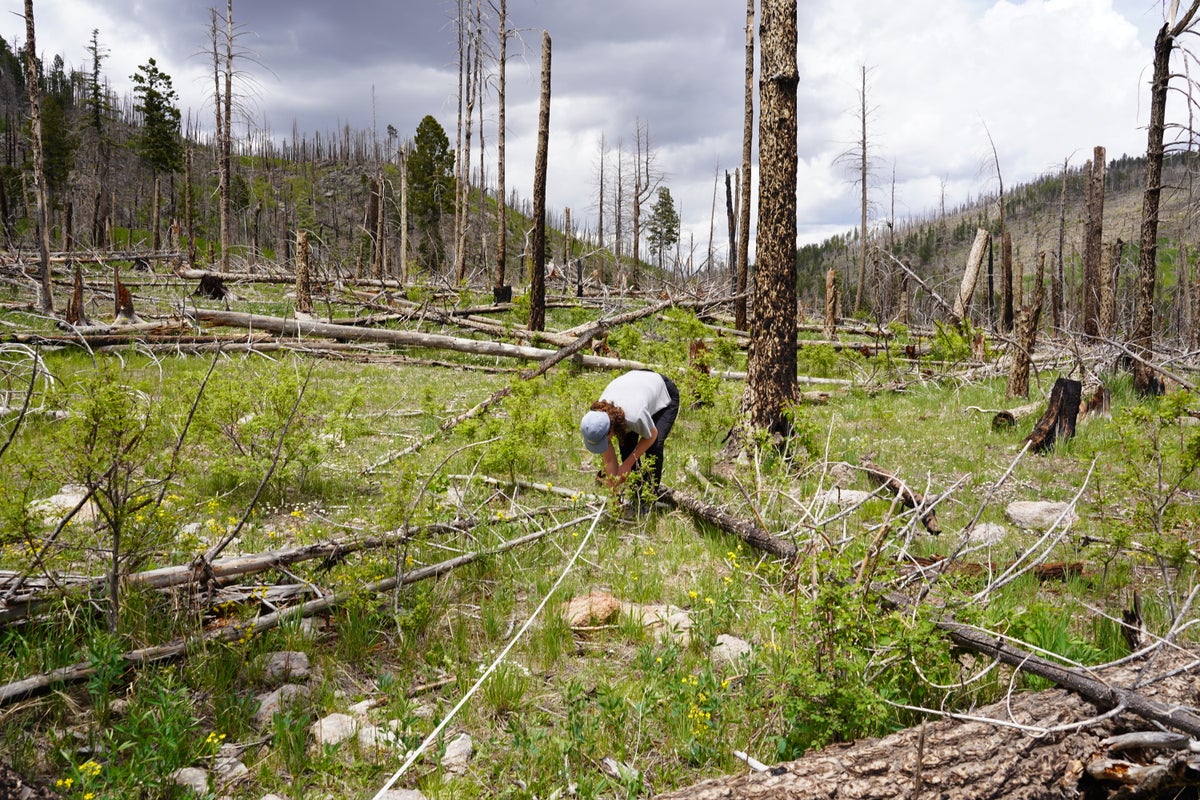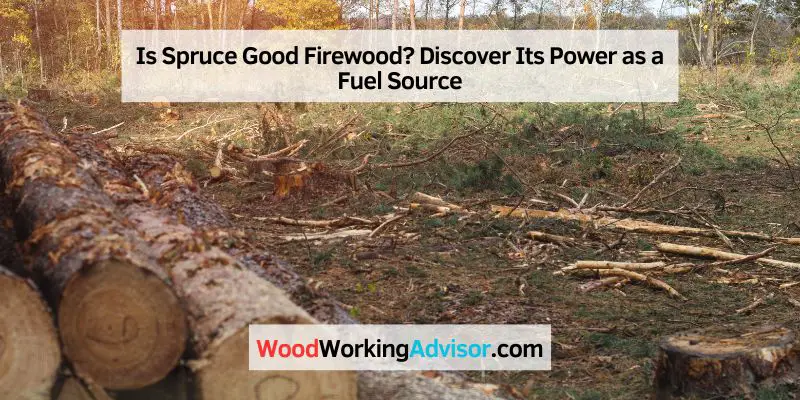Spruce is good firewood, with high heat output and low moisture content, making it ideal for burning efficiently. Spruce firewood burns well and produces a pleasant aroma while providing a consistent heat source for heating or cooking.
It is readily available and easy to handle, making it a popular choice among homeowners and campers alike. The wood from spruce trees is light in weight, meaning it can be easily transported and stacked for storage. Additionally, spruce firewood is relatively easy to ignite, making it convenient for starting a fire quickly.
Whether you’re enjoying a cozy evening by the fireplace or preparing a meal outdoors, spruce firewood is an excellent option for your fire needs.

Credit: www.freepik.com
Characteristics Of Spruce Firewood
Spruce is a popular choice for firewood due to its ease of ignition and pleasant aroma. Understanding the characteristics of spruce firewood can help homeowners make an informed decision when selecting firewood for their heating needs.
Density And Btu Content
Spruce firewood has a medium density, making it relatively easy to split and stack. Its density contributes to a moderate heat output, with an average of 15 million BTUs per cord. While not as high as some hardwoods, spruce still provides efficient heating for smaller spaces.
Moisture Content
One prominent feature of spruce firewood is its relatively high moisture content. Freshly cut spruce can contain up to 50% moisture, requiring a longer drying period for optimal burning efficiency. It’s crucial to season spruce firewood properly to reduce its moisture content and minimize the risk of creosote buildup in the chimney.
Ease Of Ignition
Spruce is known for its easy ignition, making it convenient for starting fires. Its resinous nature allows it to catch fire quickly, making it an excellent choice for kindling and initial combustion. However, proper airflow management is essential to avoid excessive smoking and to maximize its heat output.

Credit: www.scientificamerican.com
Advantages Of Using Spruce Firewood
Spruce firewood is an excellent choice for keeping your home warm and cozy during the winter months. This type of firewood offers several advantages that make it a popular option among homeowners. From its high heat output to its fast burning and quick ignition properties, spruce firewood is a reliable and efficient source of warmth. Not only that, but it is also readily available and cost-effective, making it an ideal choice for heating your home.
High Heat Output
Spruce firewood is known for its high heat output, making it an excellent choice for heating your home efficiently. When you burn spruce firewood, it releases a significant amount of heat, ensuring that your space gets warm and toasty in no time. The high heat output of spruce firewood is especially beneficial during cold winter nights when you need a reliable and efficient heat source.
Fast Burning And Quick Ignition
Spruce firewood is well-regarded for its fast-burning and quick ignition properties. It easily catches fire and burns at a rapid pace, providing instant warmth to your space. This means you can start enjoying a cozy fire quickly, without having to wait for long periods. Its fast-burning nature also means that you will require less wood to keep the fire going, making it a cost-effective option in terms of firewood consumption.
Availability And Cost
One of the advantages of using spruce firewood is its availability and cost-effectiveness. Spruce trees are widely distributed and can be found in many regions, making spruce firewood readily available. This means that you won’t have to worry about difficulties in sourcing this type of firewood. Additionally, spruce firewood is often more affordable compared to other types of firewood, making it a budget-friendly option for heating your home.
Considerations For Using Spruce Firewood
When it comes to choosing firewood for your fireplace or wood-burning stove, spruce is undoubtedly a popular option. However, before you light up that spruce firewood, there are a few important considerations you need to keep in mind. Understanding the burn time, creosote formation, and residual ash can help you make an informed decision and ensure a safe and efficient fire. In this article, we explore these vital considerations for using spruce firewood.
Burn Time
One of the essential aspects to consider when using spruce firewood is its burn time. Spruce belongs to the softwood category, which typically burns faster than hardwoods. This means that spruce firewood tends to burn relatively quickly when compared to hardwood options like oak or maple. On average, spruce firewood has a burn time of around three to four hours per log, making it ideal for short heating sessions or cozy evenings by the fire.
Creosote Formation
Creosote formation is an important consideration when using any type of firewood, and spruce is no exception. Creosote is a sticky substance that accumulates within the chimney or flue due to incomplete combustion of wood. It can create hazardous conditions and increase the risk of chimney fires. However, spruce has a higher sap content compared to other types of firewood, which means it has a higher potential for creosote formation. This increased risk highlights the importance of regular chimney cleaning and maintenance when using spruce firewood.
Residual Ash
Another factor to consider when using spruce firewood is the amount of residual ash it produces. Spruce tends to leave behind a higher volume of ash compared to hardwood varieties. While this may seem like a disadvantage, it can actually have its benefits. The higher ash content of spruce firewood helps insulate and maintain higher temperatures in the firebox, allowing for more efficient combustion. However, it also means that you may need to clean out the ash more frequently when using spruce firewood.
Ultimately, deciding whether spruce firewood is suitable for your needs depends on your specific preferences and requirements. While spruce has a shorter burn time, higher potential for creosote formation, and produces more residual ash, it can still provide a cozy and enjoyable fire experience. Just make sure to take necessary safety precautions, such as regular chimney maintenance, and consider the unique characteristics of spruce firewood when making your decision.
Tips For Safely Using Spruce Firewood
Spruce firewood can be a great option for keeping your home warm and cozy during the colder months. However, it’s important to use it safely to prevent accidents and ensure optimal efficiency. Here are some key tips for safely using spruce firewood.
Proper Firewood Storage
It is crucial to store spruce firewood properly to maintain its quality and prevent moisture accumulation. Ensure that the firewood is stacked in a well-ventilated area, away from the direct ground contact, to prevent rot and mold. Additionally, covering the top of the stack with a tarp can protect it from rain and snow.
Regular Chimney Cleaning
Schedule regular chimney cleanings to remove creosote buildup, a byproduct of burning spruce firewood. Creosote can lead to chimney fires, posing a serious risk to your home. It’s advisable to have a professional chimney sweep inspect and clean the chimney at least once a year.
:max_bytes(150000):strip_icc()/spr-primary-electric-fireplaces-hwortock-002-871af259a2d84e0fb5a44e75a320ae3d.jpg)
Credit: www.thespruce.com
Frequently Asked Questions Of Is Spruce Good Firewood
Is It OK to Burn Spruce?
Yes, it’s okay to burn spruce. Spruce wood can be used for a variety of purposes such as heating, cooking, and even for decorative fires. However, it’s important to ensure proper ventilation and safety precautions when burning any type of wood.
What Are The Disadvantages Of Spruce Wood?
Spruce wood has some disadvantages, including susceptibility to rot and decay, low durability, and vulnerability to insect attacks. Additionally, it is not as strong as other hardwoods, making it prone to warping and splitting. Regular maintenance and treatments are necessary to prolong its lifespan.
What Wood Should Not Be Used For Firewood?
Avoid using woods such as pine, cedar, and spruce for firewood as they produce excessive creosote. This can lead to chimney fires. Additionally, green or unseasoned wood should be avoided as it produces more smoke and less heat.
How Long Does Spruce Take To Season?
Spruce takes about 6 to 12 months to season properly. The seasoning process allows the wood to dry and reduce moisture content, making it suitable for use in construction and woodworking projects. Proper seasoning ensures durability and prevents warping or cracking of the wood.
Conclusion
To summarize, spruce can indeed be a good firewood option with its high heat value and moderate burning rate. Its low moisture content and resinous nature make it easy to ignite and produce a bright, crackling fire. Though it may not provide the longest burn time, its availability, affordability, and ease of handling make it a favorable choice for many.
Consider giving Spruce a try for your next cozy evening by the fire.



One thought on “Is Spruce Good Firewood? Discover Its Power as a Fuel Source”